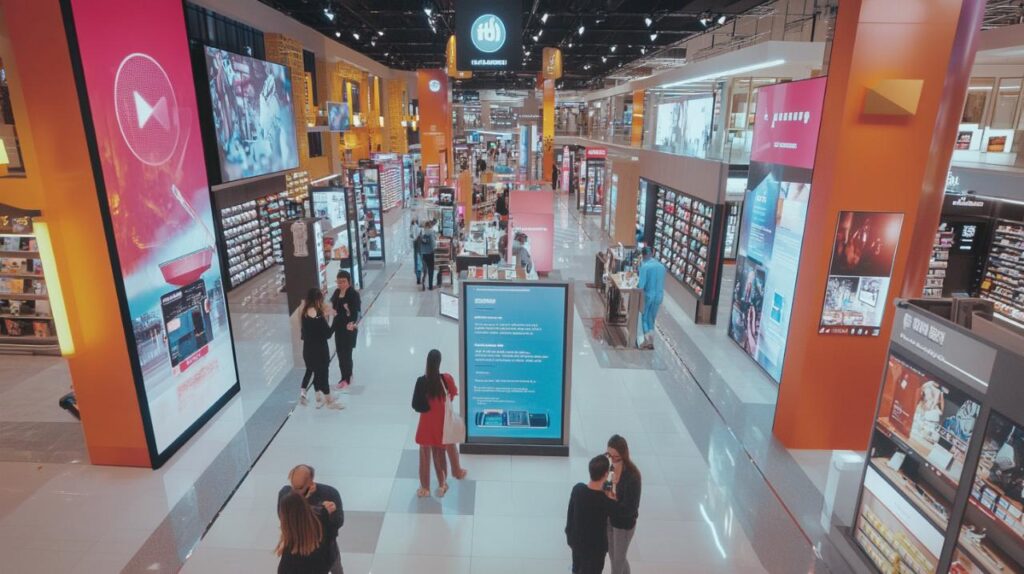The retail sector has undergone a seismic shift over recent years, driven by evolving consumer expectations, technological advancements, and the relentless march towards digital integration. From high street stalwarts to online disruptors, retailers across the United Kingdom and beyond have faced the challenge of transformation head-on. Some have emerged victorious, whilst others have stumbled and fallen. This exploration delves into the real-life triumphs and tribulations of businesses navigating the complex landscape of modern retail, offering invaluable lessons for those seeking to thrive in an increasingly competitive market.
Retail success stories: brands that nailed the transformation
Across the retail landscape, a number of brands have demonstrated remarkable agility and foresight in adapting to the demands of contemporary commerce. These success stories are not merely about adopting new technologies, but about fundamentally rethinking how value is delivered to customers. The ability to pivot, innovate, and remain customer-centric has been the hallmark of those who have not only survived but flourished amidst widespread disruption. From grocery giants to fashion innovators, these retailers have shown that transformation is as much about culture and strategy as it is about technology.
Digital Integration and Omnichannel Excellence in Modern Retailing
One of the most striking aspects of successful retail transformation has been the seamless integration of digital channels with traditional bricks-and-mortar operations. Tesco, for instance, has long been a pioneer in blending online shopping with physical store experiences, leveraging data-driven decisions to personalise offerings and enhance customer loyalty. Similarly, Walmart, with its nearly five hundred and seventy billion dollars in annual revenue, has invested heavily in e-commerce platforms and automation to streamline business operations and meet the evolving expectations of shoppers who demand convenience and speed.
The concept of an omnichannel strategy has become essential for retailers aiming to deliver consistent and engaging experiences across multiple touchpoints. ASAS has embraced this approach by integrating mobile apps, online ordering, and in-store collection services, ensuring that customers can interact with the brand on their own terms. Fashion retailer Zara has also excelled by using real-time data and technology integration to respond swiftly to trends, maintaining a competitive edge in a fast-moving industry. These brands have recognised that digital transformation is not a one-off project but an ongoing commitment to innovation and adaptability.
Moreover, the incorporation of artificial intelligence and marketing automation has allowed retailers to refine their segmentation and audience insights, tailoring campaigns to individual preferences. Email marketing, SMS marketing, and even WhatsApp marketing have become vital tools for nurturing leads and reducing cart abandonment. By harnessing these channels effectively, retailers have been able to build a loyal customer base and drive sustained business growth. The success of these initiatives underscores the importance of a well-rounded digital ecosystem that prioritises customer value at every stage of the journey.
Customer experience innovation: how leading retailers adapted to changing expectations
Beyond technology, the true differentiator for leading retailers has been their relentless focus on customer experience innovation. John Lewis, a beloved name in home furnishings and more, has consistently invested in creating immersive and personalised shopping experiences, both online and in-store. The retailer's emphasis on exceptional service and quality has helped it maintain a strong reputation even as market dynamics have shifted. Similarly, Boots has leveraged its extensive network of stores and digital platforms to offer health and beauty solutions that cater to the specific needs of its diverse customer base.
Sephora has taken personalisation to new heights by using data analytics and customer insights to recommend products tailored to individual skincare and beauty preferences. This level of customisation, combined with engaging content marketing and product reviews, has transformed the shopping experience from a transactional exchange into a meaningful interaction. The ability to anticipate customer needs and deliver relevant recommendations has been a game-changer, fostering deeper connections and encouraging repeat visits. Such innovations are frequently discussed on platforms like the compralab blog, where retail strategies and consumer trends are analysed in detail.
LEGO has also demonstrated the power of community engagement and content creation in driving customer loyalty. With thirteen million Facebook followers and over ten billion YouTube views, the brand has built a global community that extends far beyond the toy aisle. By fostering creativity and interaction, LEGO has turned customers into advocates, generating organic marketing that money simply cannot buy. This approach exemplifies how a strong company culture centred on innovation and customer-centricity can propel a brand to extraordinary heights.
In the fashion sector, ASOS and Tommy Hilfiger have embraced multichannel marketing and mobile-first strategies to reach younger, digitally-savvy audiences. With four million monthly visitors, Farfetch has carved out a niche by offering a curated selection of luxury fashion accessible through an intuitive online platform. These retailers have recognised that today's consumers expect not just convenience, but also authenticity, sustainability, and ethical practices. By aligning their values with those of their customers, they have built trust and loyalty that transcends individual transactions.
Learning from Retail Failures: What Went Wrong and Why
Whilst success stories provide inspiration, the cautionary tales of retail failures offer equally valuable lessons. Understanding what went wrong for some retailers sheds light on the pitfalls that can derail even well-established brands. The common thread among many of these failures has been an inability to adapt to rapidly changing market conditions, coupled with strategic missteps that left them vulnerable to more nimble competitors. These examples serve as a stark reminder that complacency and resistance to change can have dire consequences in the fast-paced world of retail.

Common Pitfalls: Resistance to Digital Change and Market Misunderstanding
One of the most prevalent reasons for retail decline has been resistance to digital transformation. Many traditional retailers clung to outdated business models, underestimating the speed at which consumer behaviour was shifting towards online shopping and mobile commerce. This reluctance to embrace technology integration meant that they failed to invest in the infrastructure necessary to compete with digital-first competitors. Without robust e-commerce platforms, effective marketing automation, or the ability to harness data-driven insights, these retailers found themselves increasingly marginalised.
Market misunderstanding has also played a significant role in retail failures. Some brands misjudged the importance of customer-centricity and failed to recognise the growing demand for personalisation and convenience. They continued to operate on the assumption that past success would guarantee future loyalty, neglecting the need to innovate and evolve. This lack of adaptability meant that they were unable to respond to the emergence of new retail solutions and the changing expectations of a more discerning customer base.
Cybersecurity concerns and data privacy issues have further complicated the landscape for retailers attempting digital transformation. Brands that failed to prioritise secure systems and transparent data practices faced reputational damage and lost customer trust. In an era where consumers are increasingly aware of how their information is used, any perceived negligence in this area can be catastrophic. Retailers who did not invest in robust cybersecurity measures found themselves at a significant disadvantage, unable to reassure customers that their personal and financial data was safe.
Strategic Missteps: Case Studies of Retailers Who Failed to Evolve
Several high-profile case studies illustrate the consequences of strategic missteps in the retail sector. Brands that once dominated their markets have seen their fortunes decline due to a combination of poor decision-making, failure to innovate, and an inability to pivot in response to crisis. For example, some major department stores that were slow to develop an effective omnichannel strategy found themselves losing ground to more agile competitors who could offer a seamless experience across physical and digital channels.
In the fashion retail space, some brands failed to anticipate the rapid rise of fast fashion and the demand for sustainable and ethically produced goods. Retailers such as Gap and Superdry, whilst once popular, struggled to maintain relevance as younger consumers gravitated towards brands that aligned with their values. The inability to communicate a clear brand identity and adapt to shifting trends left these retailers vulnerable to declining sales and market share.
Similarly, in the grocery sector, some chains underestimated the power of customer loyalty programmes and the importance of data in driving retention. Whilst Tesco and Sainsbury's invested in sophisticated segmentation and personalisation strategies, others failed to leverage their customer data effectively. This oversight meant they could not compete on the level of service and tailored offers that consumers had come to expect. The lesson here is clear: in a world where customer retention and loyalty are paramount, failing to utilise data and embrace innovation can be a fatal flaw.
The collapse of certain electronics retailers also highlights the dangers of neglecting online channels and customer engagement. Whilst Screwfix achieved impressive sales growth by focusing on convenience and digital integration, others in the electronics retail space failed to adapt their business operations to the realities of e-commerce. Without a strong online presence or the ability to compete on price and delivery speed, these retailers found themselves unable to attract the customers who were increasingly shopping from the comfort of their own homes.
Moreover, the travel industry and food and beverages sectors have not been immune to these challenges. Retailers in these areas who failed to adopt crisis resilience strategies or who neglected to invest in telemedicine and electronic health records where applicable found themselves struggling during periods of disruption. The ability to pivot quickly and implement new technologies has been the difference between survival and failure, as demonstrated by the contrasting fortunes of retailers who embraced change versus those who resisted it.
Ultimately, the retail transformation journey is one of continuous evolution. The success stories of brands like IKEA, Marks & Spencer, and The Body Shop demonstrate that a commitment to innovation, customer value, and adaptability can lead to sustained growth and resilience. Conversely, the failures of others serve as a reminder that resting on past achievements and ignoring the signals of change can lead to obsolescence. By learning from both the triumphs and the mistakes of these real-life cases, retailers can chart a course towards a more prosperous and sustainable future in an ever-changing marketplace.


